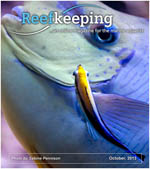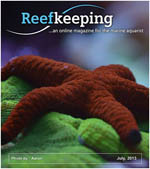We tend to see a lot of threads asking about Aiptasia - the dreaded, fast spreading, invasive anemone. It’s one of those animals that tend to do well in everyones' tank, no matter what their water parameters are.
Aiptasia are definitely considered a pest by most, and are not something we want in our reef, or fish only tanks. They look bad, are invasive and tend to spread quite rapidly. When kept in a reef tank they can and will sting corals. In my opinion, they are something we want to rid our tanks of.
 |
 |
 |
 |
I will try and outline a few of the more popular ways of eradicating these pests in our reef tanks. I am sure there are more ways than the ones I will explain, but this is a good starting point.
One of the ways I have seemed to have the best luck at eradicating them is with vinegar. Take a small amount of vinegar and put it into a microwave safe bowl, and pop it into the microwave for one minute. Take a syringe with a needle on it and draw up the vinegar. Reach in the tank and sneak up on the Aiptasia and inject some vinegar, anywhere from .25ml-.50ml, depending on the size of the Aiptasia. They will dissolve almost instantly. Try and keep this to a half dozen or so at a time to prevent any drastic pH swings.
Lime or lemon juice has been used by many with success, the needle and syringe method seems to work the best, but I have also heard some folks having success with only using a syringe and simply spraying the Aiptasia at close range.
Plain boiling water works also, in the same methods of dosing as above.
Kalkwasser or pickling lime are very common methods. Some make it into a thick paste and use a popsicle stick to smother the Aiptasia with the paste. Others will make it into a thick “slurry” and use a broad opening syringe and draw it up and spray it on the Aiptasia.
There are also various animals that will naturally eradicate Aiptasia. Many different types of butterfly fish are known to eat them. Some types of butterflies are not always reef safe, so be sure to do your research before purchasing one of these fish. One of the more common butterflies that a lot of aquarists have had very good success with is the Copper Banded Butterfly. These fish, however, can be quite difficult to keep and are very picky in what they eat. So once again, please do your research on these fish prior to purchasing one.
 |
 |
Berghia nudibranchs are also known to devour Aiptasia, but again will be very tricky to keep alive after their job is done. So this too, is another animal that should be looked at very closely before addition to a tank. They are also very small, and don’t always do well in reef tanks that have a lot of flow, as they may get blown around.
 |
 |
Probably one of the most popular, and most questioned natural predators of the Aiptasia anemone, is the Peppermint shrimp. There are definitely imposters out there that make their way into our tanks, and are sold as Peppermints. The “true” Peppermint shrimp that are generally known to eat Aiptasia are Lysmata wurdemanni. I have had great success with these animals, and I've also noticed that the greatest success comes when larger numbers of these are kept, rather than just one or two.
 |
 |
If you only have a few Aiptasia, or if you have certain restrictions not allowing you to add certain animals to your tank, I would recommend using one of the injections or pastes.
As mentioned already, and always suggested, before adding any animal to your tank for any reason, do your research and make sure it is compatible with the other inhabitants in your tank and that your tank is suitable for that particular animal.




















